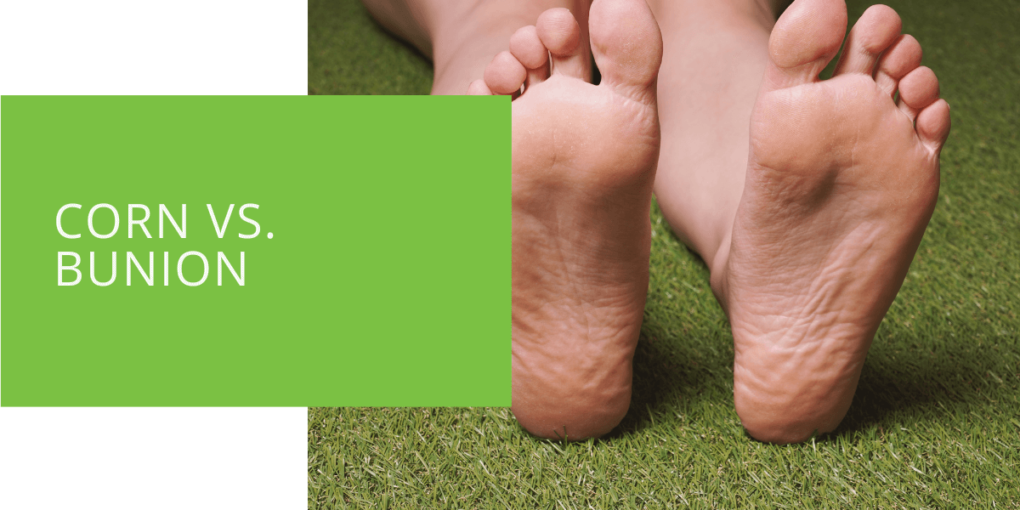Corn vs. Bunion
Corns and bunions are common foot conditions that can cause discomfort and affect foot health. Understanding the differences between corns and bunions is crucial for accurate diagnosis and appropriate treatment. This article will delve into the details of corns and bunions, including their causes, symptoms, and available treatment options, to help you differentiate between them and seek the necessary care from a podiatrist or foot specialist.
Understanding Corns
What Are Corns?
Corns are thickened areas of dead skin that develop as a result of excessive pressure or friction on certain parts of the foot. They commonly occur on the toes or the soles of the feet, presenting as small, circular patches of hardened skin. Corns can be further classified into hard corns and soft corns.
Causes and Risk Factors
Corns typically form due to ill-fitting shoes, abnormal foot mechanics, or excessive pressure on specific areas of the feet. High-risk groups include athletes, individuals with flat feet, or those with certain foot deformities. Additionally, corns can be associated with arthritis or other conditions that affect foot structure and mechanics.
Symptoms and Signs
Common symptoms of corns include thickened, hardened skin that may appear yellowish or grayish. Corns can cause pain or discomfort, especially when pressure is applied. The affected area may also become sensitive to touch.
Treatment and Prevention
Treatment for corns often involves self-care measures, such as properly fitting shoes that provide ample room for the toes and cushioning. Over-the-counter corn pads can help alleviate discomfort. For severe cases or if self-care measures do not provide relief, professional treatment by a podiatrist may be necessary. A podiatrist can use specialized tools to remove the corn and provide guidance on preventive measures safely.

Understanding Bunions
What Are Bunions?
On the other hand, bunions are bony deformities that occur at the base of the big toe. They are characterized by a protrusion on the side of the foot, causing the big toe to deviate towards the other toes. Bunions develop gradually and can lead to pain, swelling, and inflammation.
Causes and Risk Factors
Bunions are often caused by genetic factors and abnormal foot structure, such as flat feet or excessive pronation. Certain shoe choices, particularly those that squeeze the toes together, can exacerbate bunion formation. Women are more prone to developing bunions, which may be associated with arthritis or other medical conditions.
Symptoms and Signs
The main sign of a bunion is a bony bump on the side of the foot at the base of the big toe. This bump can become red, swollen, and tender. Over time, the big toe may gradually shift toward the smaller toes, causing discomfort and difficulty in wearing certain footwear.
Treatment and Prevention
Conservative treatment options for bunions include wearing shoes with a wider toe box and using orthotic inserts to support and alleviate pressure on the affected area. Non-steroidal anti-inflammatory drugs (NSAIDs) may help manage pain and inflammation. In more severe cases or when conservative measures fail to provide relief, surgical intervention by a podiatrist may be recommended to correct the deformity.

Differentiating Corns and Bunions
Physical Differences
Corns and bunions differ in their physical characteristics. Corns appear as small, circular patches of hardened skin, typically found on the toes or soles of the feet. They are localized areas of thickened skin due to pressure or friction. On the other hand, bunions are bony deformities at the base of the big toe, resulting in a protrusion on the side of the foot. They involve the misalignment of the metatarsal bone, leading to the deviation of the big toe towards the other toes.
Underlying Causes and Development
Corns develop due to repeated pressure or friction on specific areas of the feet. This can be caused by ill-fitting shoes, abnormal foot mechanics, or excessive walking or running. In contrast, bunions have a genetic component and can be influenced by abnormal foot structure, such as flat feet or excessive pronation. Certain shoes that squeeze the toes together can further aggravate the development of bunions.
Treatment Approaches
The treatment approaches for corns and bunions differ due to their distinct nature. For corns, self-care measures are often effective, such as wearing comfortable shoes with adequate toe room and using over-the-counter corn pads to alleviate pressure. A podiatrist can also provide professional treatment by safely removing the corn and addressing underlying foot issues.
Bunions, on the other hand, may require a combination of conservative and surgical interventions. Conservative measures include wearing appropriate footwear, using orthotic inserts, and applying ice or taking anti-inflammatory medication to manage pain and inflammation. However, if the bunion causes severe pain or interferes with daily activities, surgery may be recommended to correct the deformity and realign the affected joint.
Conclusion
Understanding the differences between corns and bunions is crucial in determining the appropriate treatment approach. Corns are areas of thickened skin caused by pressure or friction, while bunions are bony deformities at the base of the big toe. While self-care measures can often help alleviate corns, bunions may require a combination of conservative treatments and, in some cases, surgical intervention. It is important to consult with a podiatrist or foot specialist to receive an accurate diagnosis and tailored treatment plan for optimal foot health and pain relief.

